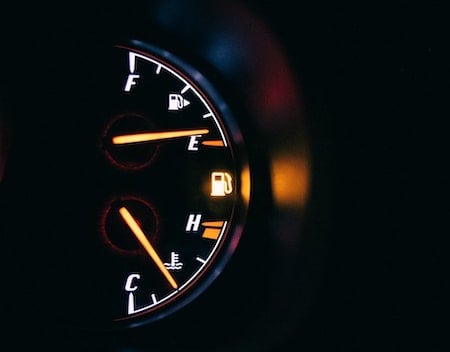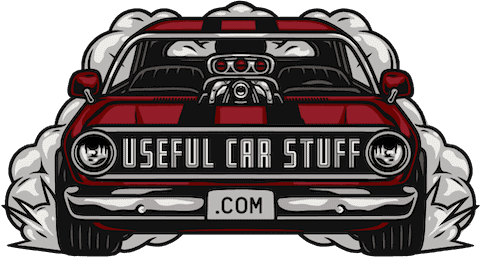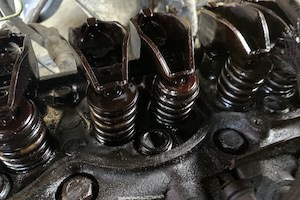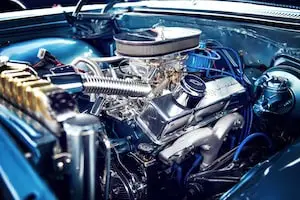Always be concerned and constantly check on your car if you want it to last and remain reliable! That’s for me why when I heard it was possible to cause damage to your engine from running with low fuel I just had to dive into the research and find out! The results are surprising and will benefit you to educate yourself for a few minutes and avoid expensive repairs in the future.

Does driving with low fuel cause damage to your engine?
There is no damage caused to the engine by driving with low fuel although, constantly driving with low fuel can cause premature wear on parts such as the fuel pump. Driving with low fuel can cause the fuel pump to overheat and may allow debris in the gas tank to be drawn up to the filter.
The fuel pump and the fuel filter are the only car parts that you should have concern for if you would like to constantly drive with low fuel.
I will cover how the fuel pump and the damaged as well as what may cause debris to be drawn up by running on the fuel.
Damage Done From Driving with Low Fuel
It can be concerning to hear things such as your engine may be damaged if you drive with low fuel when you are new to automotive care and maintenance, but we are here to clear that up. We depend on our cars so much, it is critical to learn what things can damage your car!
To be clear up front, driving around with low fuel will not cause serious damage to your engine. It is not recommended because driving with low fuel constantly may deprive your fuel pump of enough fuel to keep it cool. This applies to all cars that have a fuel pump inside the gas tank.
Damage to the Fuel Pump from Low Fuel
In many trucks cars, the fuel pump is submerged in the tank and uses the gasoline to act as a coolant for the electric motor continually operating that is the fuel pump.
Fuel pumps failing from not enough fuel is not a majorly common occurrence, since most cars have been equipped with efficient fuel pumps that can avoid this issue. It would not be a very good design of car manufacturers to require fuel 100% of the time to keep the fuel pump alive, but I have seen this problem before and it can wear out the fuel pump.
Most cars with electric fuel pumps in the gas tank have been designed effectively in efficiently enough to be able to withstand short periods of time with low fuel and require little cooling. Most are also designed to stay relatively cool since no one would appreciate a fuel pump that heats up to extremely high temperatures inside of a gasoline tank.
The biggest consequence of this situation would be that the fuel pump will fail and can be costly since often the gas tank must be removed to access the fuel pump.
You are better off just making the effort to fill up at 1/4 tank.
Location of the Fuel Pump
The location of the fuel pump will determine if driving with low fuel has the potential to damage your fuel pump or not. If your car is newer than 1990 then most likely you have an electric fuel pump and most electric fuel pumps are inside the gas tank. Cars made in the 80’s and earlier often had mechanical fuel pumps that were located on the side of the engine.
Many old style cars have a mechanical fuel pump but it is more common today for cars to have an electric fuel pump inside the gas tank.
More Debris in the Fuel Filter When Low on Fuel
There are two main things that can be damaged or worn out from driving with low fuel.
The second thing is the fuel filter may become plugged with more debris from driving with a car constantly with low fuel as opposed to one that runs with gas for all the time.
Depending on the design of the pick up line inside the gas tank, sometimes the pick up line will lower as the fuel line lowers. If the fuel lowers close to the bottom, then the pick up line will be close to the bottom where there is generally more debris from rust or anything else that has gotten into the gas tank.
There are a few filters in place for this very reason of drawing up debris from the gas tank and so this is not a concern other than potentially plugging the fuel filter which should be replaced regularly anyways. This is not a major concern but it is one that should be mentioned.
Damage to the Engine from Running Lean
Some may argue that running with almost no fuel will allow the gas in the tank slosh and for brief periods of time draw in air and the engine will run lean.
This only happens right when the car runs out of gas because the fuel pump keeps the fuel line pressurized between the tank and the throttle body.
Theoretically, if you were to run out of gas and then add a very small amount of fuel and run out of gas again and repeat hundreds of times then yes it could cause damage to the engine from running lean but for the practical case of running with low fuel without running out of fuel there will be no damage caused the engine.
I will mention here that running out of fuel comes to mind when I think of constantly driving with low fuel and that has little to no repercussions for a gasoline engine, but is a hassle and may cause damage for an engine that runs on diesel.
See my other post about How Running out of Diesel May Damage the Engine
How Much Fuel Should I Keep in the Gas Tank at a Minimum
How much fuel is enough to protect my fuel pump?
A minimum 1/4 tank is recommended. I make an effort to fill my gas tank when it reaches no less than 1/4 tank to prevent any complications or extra wear on the engine, fuel pump, or filter. 1/4 tank is the minimum amount to keep the pick up line clear and maintain fuel around the fuel pump
A minimal effort is needed to avoid premature wear on the fuel pump and filter.
Its never convenient to run out of gas and that will be avoided much more easily filling up once your car reaches 1/4 tank. The extra effort will give you peace of mind you are treating your car right.
You may be curious how much gas should be left in a tank when the car is stored so check out that article here
Or read my article about why running out of fuel is bad for a diesel engine.


